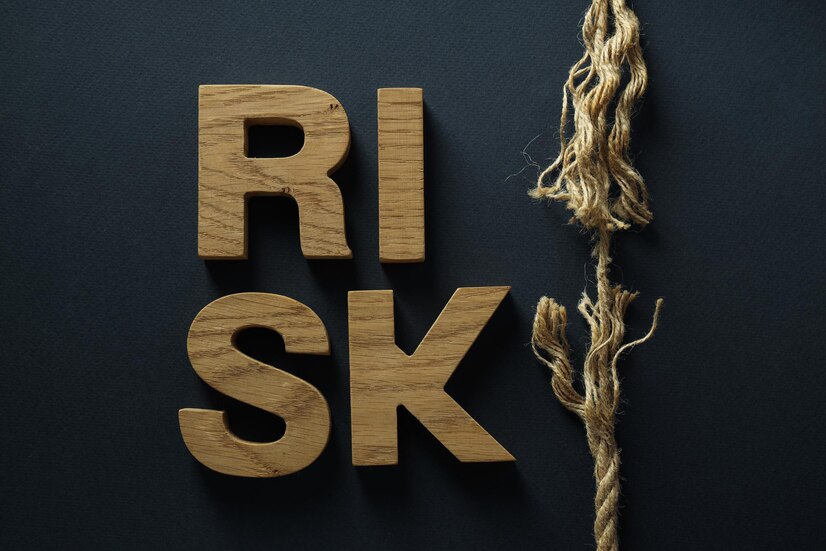Introduction to TC Disruption Risks
In today’s fast-paced business landscape, the threat of TC disruption looms larger than ever. Whether it’s unforeseen natural disasters, supply chain breakdowns, or technological failures, these disruptions can strike at any moment and leave companies scrambling to recover. The unpredictable nature of these challenges makes it essential for businesses to proactively address potential risks before they escalate into full-blown crises.
Every organization is vulnerable to TC disrupt events that can derail operations and impact profitability. Yet not all hope is lost. By implementing strategic measures designed to mitigate these risks, businesses can emerge stronger and more resilient from adversity. Discovering effective strategies for managing TC disrupt scenarios will not only safeguard your assets but also enhance overall operational efficiency.
Let’s delve into the critical aspects of understanding TC disruption risks and explore actionable steps you can take today to protect your business tomorrow.
Understanding the Impact of TC Disruption on Businesses
TC disruptions can create significant challenges for businesses. These interruptions often stem from technological issues, supply chain failures, or natural disasters. Regardless of the cause, their impact is profound.
Operational efficiency usually takes a hit. When systems go down or resources are unavailable, productivity plummets. Employees may find themselves unable to perform crucial tasks.
Customer satisfaction also suffers during these periods. Delays in service delivery can lead to frustration and loss of trust among clients. In today’s competitive landscape, retaining customer loyalty is vital.
Financial implications are another concern; losses can accumulate quickly due to halted revenue streams and unexpected expenses related to recovery efforts. This financial strain can hinder future growth opportunities.
The company’s reputation faces risks too—negative perceptions can linger long after a disruption has been resolved. The ripple effects of TC disrupts extend far beyond immediate operational concerns.
Key Strategies for Mitigating TC Disruption Risks
Mitigating TC disrupt requires a proactive approach. Businesses must identify vulnerabilities in their operations first. This understanding lays the groundwork for effective strategies.
One key method is to implement robust supply chain management. Diversifying suppliers can prevent disruptions from affecting production continuity.
Another strategy involves enhancing communication channels. Keeping teams informed during crises helps maintain workflow and reduces confusion.
Investing in technology also plays a crucial role. Automation tools can streamline processes, making businesses more resilient to unexpected changes.
Fostering a culture of adaptability within your organization boosts overall preparedness. When employees are trained to pivot quickly, they contribute significantly to risk mitigation efforts.
Adopting these strategies not only safeguards against TC disrupt but positions companies for long-term success in an unpredictable landscape.
Implementing a Business Continuity Plan
A robust business continuity plan (BCP) is essential for any organization facing potential tc disrupt scenarios. This proactive approach helps ensure that critical functions remain operational, even during significant disruptions.
Start by identifying key business processes and the resources required to support them. Understanding these elements allows businesses to prioritize what needs immediate attention in times of crisis.
Next, establish clear protocols for communication. Employees must know how to access information and report issues quickly. A well-informed team can respond effectively when challenges arise.
Regularly testing your BCP is crucial. Simulated disruptions can reveal gaps in your strategies, providing valuable insights into necessary adjustments or enhancements.
Remember, a BCP isn’t a one-time effort; it should evolve alongside the organization and its environment. Consistent reviews and updates will keep your plan relevant and effective against emerging risks associated with tc disrupt events.
Developing Partnerships and Collaborations
Developing partnerships and collaborations is crucial when tackling TC disrupt challenges. Collaboration can amplify resources and expertise, providing a broader safety net.
Forming alliances with other businesses helps share knowledge on best practices for risk mitigation. This mutual support fosters innovation while enhancing resilience against potential disruptions.
Engaging with industry associations also opens doors to valuable insights. These networks often offer tools that assist in navigating the complexities of TC disrupt risks effectively.
Strategic partnerships with technology providers can streamline operations. By leveraging cutting-edge solutions, companies can minimize vulnerabilities associated with unexpected disruptions.
Consider collaborating with local authorities or community organizations. Such relationships not only bolster response efforts but also strengthen community ties—an essential element during crises.
Investing in Technology and Infrastructure
Investing in technology and infrastructure is crucial for mitigating TC disruption risks. Modern tools can streamline operations, ensuring resilience against unexpected challenges.
Cloud computing offers flexibility, enabling businesses to access data remotely. This adaptability helps maintain productivity even during disruptions.
Automation can also enhance efficiency. By reducing manual processes, companies free up resources and minimize human error.
Upgrading physical infrastructure might involve enhancing cybersecurity measures or improving logistics systems. Stronger networks protect against potential threats while ensuring smooth communication among teams.
Consider emerging technologies like AI and IoT as well. These innovations provide real-time insights that help organizations respond swiftly to unforeseen circumstances.
A proactive approach to tech investment creates a robust foundation for your business’s future stability and growth amidst uncertainties.
Employee Training and Education
Investing in employee training and education is crucial for mitigating TC disrupt risks. An informed workforce can respond effectively to unexpected challenges.
Training sessions should focus on crisis management, communication strategies, and problem-solving skills. Employees need to understand the potential impact of disruptions on their roles and the organization as a whole.
Encouraging a culture of continuous learning keeps teams agile. Workshops, seminars, and online courses can enhance knowledge about emerging technologies relevant to your industry.
Moreover, scenario-based drills allow employees to practice responses during simulated disruptions. This hands-on experience builds confidence in navigating real-world situations.
Regularly updating training materials ensures that staff stay current with best practices. Engaged employees are more likely to contribute ideas for improving resilience against disrupptions. Investing time in their development ultimately strengthens your organization’s capacity for recovery when facing challenges.
Regular Risk Assessments and Adaptability Plans
Regular risk assessments are crucial for identifying potential threats that could lead to TC disruption. By routinely analyzing vulnerabilities, businesses can stay ahead of emerging risks.
Adaptability plans play a vital role in this process. These plans ensure that teams can pivot their strategies in response to new challenges. Flexibility is key in today’s fast-paced environment.
Implementing these assessments fosters a culture of preparedness within the organization. Employees become more aware of possible disruptions and how to respond effectively.
Additionally, integrating feedback from past incidents enhances future readiness. Organizations learn what worked and what didn’t during prior disruptions.
This proactive approach not only mitigates risks but also builds resilience over time. When employees feel equipped to handle potential issues, confidence grows throughout the company.
Case Studies: Successful Mitigation of TC Disruption Risks
One notable case is a major logistics company that faced severe disruptions due to unexpected supply chain interruptions. By implementing advanced analytics, they were able to predict potential risks and adjust their operations accordingly. This proactive approach minimized downtime and ensured timely deliveries.
Another example involves a tech firm that integrated cloud solutions into its infrastructure. During a significant data breach, the company’s quick transition to secure cloud services not only safeguarded sensitive information but also enabled uninterrupted service for clients.
A retail giant showcased the power of employee training by running simulation exercises on crisis management. When an unprecedented natural disaster struck, their staff was prepared, ensuring swift customer service and minimal impact on sales.
These real-world examples illustrate how strategic planning can effectively tackle TC disrupt challenges, paving the way for resilience in uncertain times.
Conclusion: The Importance
The significance of addressing TC disrupt risks cannot be overstated. Businesses today face a multitude of challenges that can derail operations and threaten sustainability. Recognizing the potential for disruption is the first step toward ensuring resilience.
Implementing robust strategies to mitigate these risks creates a foundation for long-term success. A well-structured business continuity plan allows organizations to respond swiftly in times of crisis, minimizing downtime and loss. Building partnerships fosters collaboration, enhancing resource availability during critical situations.
Investing in technology strengthens infrastructure, allowing businesses to adapt quickly to changing circumstances. Employee training not only equips teams with necessary skills but also instills confidence in their ability to navigate disruptions effectively.
Regular risk assessments ensure that companies remain adaptable and prepared for unforeseen events. Learning from case studies of successful mitigation provides valuable insights that can be applied across various industries.
Prioritizing these strategies leads not just to survival but thriving even amid uncertainty. The proactive approach taken today will pave the way for a more resilient future tomorrow, enabling businesses to withstand any TC disrupt they might encounter along their journey.


